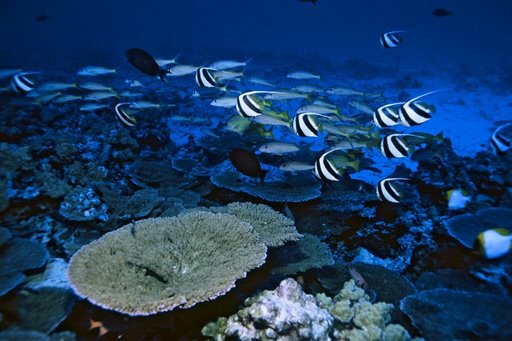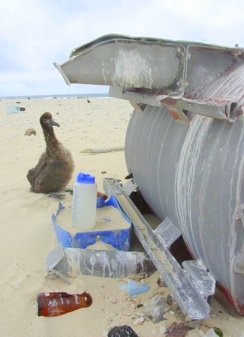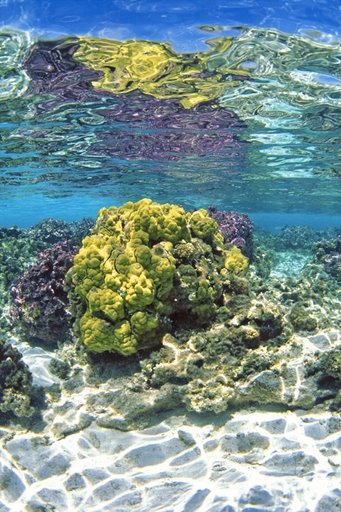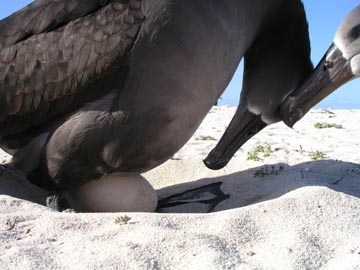Blog
News, updates, finds, stories, and tidbits from staff and community members at KAHEA. Got something to share? Email us at: kahea-alliance@hawaii.rr.com.
Evan in Honolulu Advertiser: concerns persist over NWHI plan!
Evan is our rock star summer intern here at KAHEA, a UH Law Student, and Fellow with the Center for Excellence in Native Hawaiian Law. He has spent much of the last month combing the 1,200 page draft plan for the future of the Northwestern Hawaiian Islands–some of the last intact Hawaiian coral reef on the planet. He has been working along with experts in resource management, science and cultural practice to review, analyze and develop our detailed comments on the draft plan.
From his commentary in the Honolulu Advertiser:
After a two-year multi-agency effort, the public had only 75 days to muster up comments on the four-volume draft. Tomorrow is the deadline [the deadline was recently extended 15 days to July 23] thus far, we have simply not heard from the people.
Among the greatest concerns in the current draft is the abandonment of the “precautionary principle,” which requires biological, cultural and historic resource protection and integrity to be favored when there is a lack of information regarding the potential impacts of any activity.
After the public spoke clearly about their desire to maintain this fragile ocean wilderness as a pu’uhonua (forever sanctuary), this principle was firmly embedded into the presidential proclamation that established the monument.
Instead, this “do no harm” mandate was watered down and replaced with research plans of a questionable nature and vamped-up visitor plans. Even more important, the people have been stripped from the process.
The draft plan fails to mention retaining a public oversight committee. The Reserve Advisory Council played a pivotal role in providing public oversight in the creation of the monument, yet any similar entity has been eliminated.
Other areas where notable improvements can be made include: the need for Native Hawaiian involvement in the leadership and management of the monument; revisions to the permitting process, including renewal and enforcement; prioritizing research around critical conservation needs; the absence of an effective cumulative impact analysis, excessive ecotourism and visitor plans on Midway; and an incomplete and largely unsubstantiated cultural impact assessment.
With time running out, I urge you to visit www.kahea.org to see some of the major concerns that have been outlined by citizens, scientists, environmental advocates and Native Hawaiians who have been diligently parsing the draft proposal.
15 more days to speak up for some of Hawai`i's last intact coral reefs!
Thanks to your strong requests for additional time, government managers have granted an extra 15-days for public comment–moving the final deadline for comments to July 23. It ain’t much, but it is something.
If you’re a member of the KAHEA Action Alert Network, you’ve been seeing alerts on protecting the future of the pristine coral reefs of the Northwestern Hawaiian Islands (also known as the NWHI)… for about a month now.
We’re taking our extra 15 days, and along with thousands of others around the world, we’re asking for a better, stronger management plan. This plan spells out how the NWHI will be protected for the next 15 years.
So we’ll say it again! Without a better plan, we will be opening the Northwestern Hawaiian Islands to :
- Expanded military activities with NO mitigations
- Increased extractive research with NO protection from bioprospecting
- Increased development footprint, and more construction
- Increased vessel traffic
- Cruise ships and increases in permitted tourism
You can support by submitting your own written comments, signing our petition, and spreading the word. Mahalo piha to the thousands who have already supported the call for a better plan!
Where's the public in this "public process"?
From Evan, law school student and Legal Fellow from the Center for Excellence in Native Hawaiian Law working on staff with KAHEA this summer:
Was thrown into the deep waters of the 1,200 page Papahanaumokuakea Draft Monument Management Plan for the Northwestern Hawaiian Islands this summer. It’s given me a unique opportunity to observe the workings of this “public” process. I’ve worked with experts in reviewing the plan, and attended several of the public hearings set up by the State/Federal Co-Trustee agencies. My observation: It is a recipe for disaster to take two years of closed door processes, package it into 4 very thick volumes and then expect the public at large to comment in any detail about what the plan entails. 
(This is what 700 pages of the 1,200 page plan looks like. Erm, fun.)
I first attended the hearing at the Department of the Interior in Washington D.C. (the only hearing held outside our lovely archipelago). I was quickly made aware of the fact that I would be the only person offering public testimony. So much for the public in this public hearing.
After giving an impassioned 20 minute explanation of KAHEAʻs overarching concerns, I was flooded with a steady stream of “How do you do’s?” and “Can we get a copy of your testimony?” from interested national NGO’s and congressional staffers. I was glad for the opportunity to get the word out on our key concerns, despite the dismal showing of public engagement.
The next chance I had to attend was the final night of the Federal/State Co-Trustee Island Summer Hearings Tour 2008. From all accounts, the crowd of about 60 at the Japanese Cultural Center in Moilili was by far the largest of any of the meetings. The format was a little different from D.C. and to be honest, quite unlike anything I had ever witnessed before. After a formal introduction to the Monument (same as D.C.), was an open discussion with Monument staff who were broken into 6 tables that synchronized with 6 priority management needs from the plan. It had an element of “spoon-feeding” to it, and considering that many had come to supply public testimony, made things run a little later than they may have otherwise. Nonetheless, I found this segue to be a nice opportunity to bring some of my major gripes with the plan directly to the folks who had put it together.
Over the course of this experience, I have been amazed at the bizarre nature of this top-down “public” process.
When asked: “Why was the citizen’s advisory council removed from the plan?”
A rep responded: “Actually, we do want one. We left it out because we wanted to see what the public would come up with during the review period.”
I’d suggest that a proper, engaged public process wouldn’t have waited until the review period to see what the “the public would come up with.” It all reminded me of the hide the ball game my law professors sometimes like to play. Except this is not law school. Why intentionally leave something as important as public oversight and advisory committees out of the plan, on purpose? Something as important as the Monument surely deserves better!
All told, the nine public meetings yielded about 250 total attendees and 70 testifiers. Not exactly up to par with the 100,000+ comments that helped create the Monument. Essentially, there was very little public at in these public meetings.
It is the job of the government managers to engage the public in this process–to bring the place and the process to the people. The length of time since the Co-Trustees have seen daylight, coupled with the sheer magnitude of the plan are likely culprits for this erosion of public engagement. I simply cannot accept that after previous outpourings of energy, suddenly nobody cares enough about this place to speak out. Another likely reality involves the seventy five day open period for submitting comments, which is rapidly coming to a close on July 8th. Compared to the two years it took countless full time staff to develop the plan, 75 days is simply too short a time to garner the effective and real public involvement needed to protect this special place.
This is one of the truly intact Hawaiian reef ecosystems left on earth–precious cultural and natural heritage that deserves our attention and voices. You can learn more about problems with the current plan, and how to ask for a better process and more time to get the “public” involved at: www.kahea.org.
enforcement means everybody, folks.
From Miwa:
On June 13, the Hawai`i Board of Land and Natural Resources quietly denied the permit of HIMB disease researcher Greta Aeby, in the closing chapter of a historic enforcement action for the Northwestern Hawaiian Islands. Aeby was reported in 2006 by fellow researchers to be transporting potentially diseased coral shipboard in an open-flow system–a clear violation of her research permit.
After initially contesting the violation, she and HIMB finally accepted the enforcement action earlier this year. (But only after third-party legal intervention by us at KAHEA!) She remains under investigation for other violations related to illegal disease cultivation and importation.
We have taken some heat for standing up and urging the full enforcement of the law for this HIMB researcher. Do we hate HIMB? Do we hate researchers? Absolutely not. There are plenty of good people who work at HIMB, many of whom are our friends.
What we ARE saying is that no matter who you are, the rules apply. HIMB researchers, commercial and recreational fishers–all the same. The protective rules are in place for good reason, rules for which many people fought incredibly hard. Through many years, and sometimes at great personal expense, they fought to protect this place as an intact natural and cultural legacy for future generations. This is about responsibility and it is about respect. Responsible research is about respect for the resource and respect for the people to whom the resource ultimately belongs.
Thanks to the participation of over 100,000 members of the public, the Northwestern Hawaiian Islands are today protected as the largest no-take marine reserve on the planet. Permits are required to access the area, and research permits in particular, are considered a privilege for those researchers who are contributing directly to conservation of the area and can conduct their activities responsibly–with little to no impact. This is because our policies and rules in Hawai`i recognize that irresponsibly conducted research poses serious risks and can cause serious harms.
We commend the BLNR for upholding the rules in place to protect the Northwestern Hawaiian Islands. Through strong rules and strong enforcement, we can continue to keep this place as a true pu`uohonua. Forever.
We live in the endangered species capitol of the planet, islands impacted heavily by the onslaught of invasive species and the impacts of climate change on our Hawaiian reefs. In the face of all this, we believe that for this one, last intact and pristine Hawaiian place, we can act together to do the right thing.
conservation plan = more impacts? we don't get it.
A short video we put together on the new draft of a 15-year plan for the future of the Northwestern Hawaiian Islands.* We’ve read all 1,200 pages of it, and reviewed it with experts everywhere from Sierra Club to Environmental Defense. Our conclusion? We can do much, much better.
Now, we’re seeking signatures on a petition asking for a better, stronger Plan for this fragile wahi pana.
The current draft is a plan for conservation which, inexplicably, actually expands the footprint of human activity in this pristine and uniquely Hawaiian coral reef ecosystem.
In the largest no-take marine reserve on the planet, this draft of the Federal/State plan is proposing the construction of a “small municipality” on Midway, new cruise ships, more tourists, increases in extractive research, new risks of invasive species introductions, exemptions for fishing, and opening of the area to bioprospecting. An expansion of military activities–including sonar, ballistic missile interceptions, and chemical warfare simulations–would be allowed to go forward with no mitigations. The plan also disbands the existing citizen advisory council, which is pretty much the only opportunity for members of the public (non-government scientists, advocates, cultural practitioners, and resource experts) to participate in decision-making. Yeesh.
Over 100,000 people from all over the world helped establish the Papahanaumokuakea National Marine Monument and the Hawaii State NWHI Refuge–perhaps the most visionary legal marine area protections in history. We need to ask government managers for a plan which upholds these strong protections. We should be working towards full conservation, NOT creating and formalizing exceptions to the rules. That’s our position, anyway.
If you agree, please take a few seconds to add your name to the petition. This last intact, endangered and uniquely Hawaiian coral reef ecosystem deserves a plan for its FULL conservation. Unless we show broad public support, protections we fought so hard for will be paper, not practice.
*The hearings mentioned in the video are over, but there is still one week left to make your voice heard. More information at www.kahea.org. Deadline is July 8, 2008.
Uncle Buzzy Calls for Renewed Committment to Pu`uhonua, Sunday's Star-Bulletin
We opened up the Star-Bulletin on Sunday, and there in the Gathering Place section was long-time NWHI advocate Uncle Buzzy, calling for a renewed public commitment to a true pu`uhonua — a ‘forever sanctuary’ — in the Northwestern Hawaiian Islands. Ho‘omaika‘i ia Uncle Buzzy!
Uncle Louis “Buzzy” Agard, is a founding Board Member of KAHEA and a revered kupuna (elder) who lived and fished in the Northwestern Hawaiian Islands (NWHI) for many years. In 2001, he was honored by President Clinton at the establishment of the NWHI Coral Reef Ecosystem Reserve. Today, Uncle Buzzy still serves on the citizen advisory council (RAC) for the Reserve and remains a staunch advocate for the strongest possible protections in the NWHI.
Excerpts from his editorial:
In 2005, the state of Hawaii finally embraced what native Hawaiians have known for generations: the Northwestern Hawaiian Islands are a delicate, sacred ecosystem that must be respected. The state took a visionary step forward establishing the first state marine refuge in the NWHI and requiring that human activity there “do no harm” to this fragile ecosystem. In 2006, the federal government followed suit, establishing the Papahanaumokuakea National Marine Monument. These protected areas rely on permits to control the human footprint up there.
But today more and more people are going to the NWHI for research, education, even sightseeing. Any time you set something off limits, people want to go there; this is the irony of our success in establishing protections for the Northwestern Hawaiian Islands. Already this year, permits have been granted to allow unlimited numbers of people to go to the NWHI to do any kind of dredging, discharging and taking, even recreational fishing. Researchers have violated their permits and we have seen little will for enforcement. This is wrong. We must change our attitude about this place entirely — there should be no human footprint there.
Millions of dollars have been set aside by the federal government, and with good intentions. But money is a magnet for people. They see the money and their first question is, “What can I propose to do up there?” A scientist will say to the Hawaiian fisher, “Take only what you need,” but in his research practice he doesn’t heed his own advice. This is not why the people of Hawaii and the world fought so hard to protect this place.
The Northwestern Hawaiian Islands is a place of great hope for the future of the resources in our oceans, and it is for this reason that we set it aside. Let us honor the commitment we made to protect this fragile place as a true pu`uhonua.
You can see the full letter at: http://starbulletin.com/2008/03/02/editorial/commentary.html
being heard? yup, it feels good.
From Marti:
I admit to still being on cloud 9 about the recent announcement of the hearing officer’s decision on KAHEA’s standing to participate in the contested case on the research permit violations in the NWHI. Hooray! What an amazing affirmation of the power of showing up.
We have attended every possible hearing about research permits to the NWHI and raised serious concerns about the lack of enforcement action on these research permit violations. We have shown up to talk about the lack of standards to determine who should be allowed up there and the lack of best practices to ensure their activities do no harm, as the law requires. We have again and again said that these research permit violations are a serious breach of public trust, and that rules should apply equally, no matter who is in violation–everyone should be held to the same standard: fishers, researchers, sight-seers, everyone.
I wish had a dime for every time I’ve heard someone say with regards to these research violations, “Trust me, researchers would never harm the resource.” Talk about totally missing the point. The point is that researchers, like everyone else, are obligated to know and follow the rules put in place to protect this fragile public trust resource. Simple as that. The fact is most people don’t ever to intend to harm the environment, but they do because they don’t follow the rules, don’t think that their actions could have an impact.
It was incredibly empowering to sit at that hearing table – elbow to elbow with HIMB’s attorney and the Attorney General on behalf of DLNR – and have an impartial officer of the court listen to all three sides. We had an equal opportunity to present arguments and evidence. And in the end, this impartial officer said, “Yes, KAHEA brings a meaningful perspective to this discussion and should be party to this case.”
Wow. For that, my faith in the public decision-making process is renewed. We couldn’t have asked for a more meaningful affirmation of our voice and role.
Too often the voices of those most directly affected by the decisions of officials are marginalized or even lost altogether. It is easy for money and politics to drive decisions. But when those influences are stripped away and those who have nothing to give but love for our ‘aina – people like Uncle Buzzy – can sit at a table and be heard on equal terms with all rest… that is when the best decisions are made.
It was these people – those without power or money – that led the struggle for the strongest possible protections in the Northwestern Hawaiian Islands and successfully made their voice heard. And it will be these same people who will continue to ensure that those protections are fully implemented and enforced…. because these protections are nothing if they aren’t enforced, fully.
Hooray, hooray today–for the little guy!
Highlights of KAHEA’s concerns about lack of DLNR enforcement (from our recent webpage update):
The violations were first reported to DLNR staff in May 2006 while the vessel was still in the NWHI. But DLNR staff failed to notify the proper enforcement division, DOCARE, until late February 2007, almost a year after the infractions occurred. No investigators met the ship when it docked in Honolulu to inspect what the researchers brought back with them.
“This is a major problem,” said Marti Townsend, Program Director for KAHEA. “The history of close working relationships between DLNR and HIMB staff has clearly called into question DLNR’s ability to be objective and properly enforce the law.”
Before the incidents were investigated by DOCARE and voted on by the Land Board, staff with the Aquatics Division of DLNR attempted to negotiate a penalty with the researchers at HIMB. The staff brought the enforcement action before the BLNR twice – first in January 2007 and again in July 2007. Both times the staff recommended that the Land Board impose weakened penalties against the HIMB researcher, side-stepping the Refuge’s strict “one strike” law that prohibits future permits to be granted to past permit violators.
“Given all of the tremendous public support for the strongest possible protections, and political will for the creation of these protections, it is astonishing that personal friendships and financial ties still seem to determine the near absolute lack of enforcement of NWHI rules,” said Townsend.














